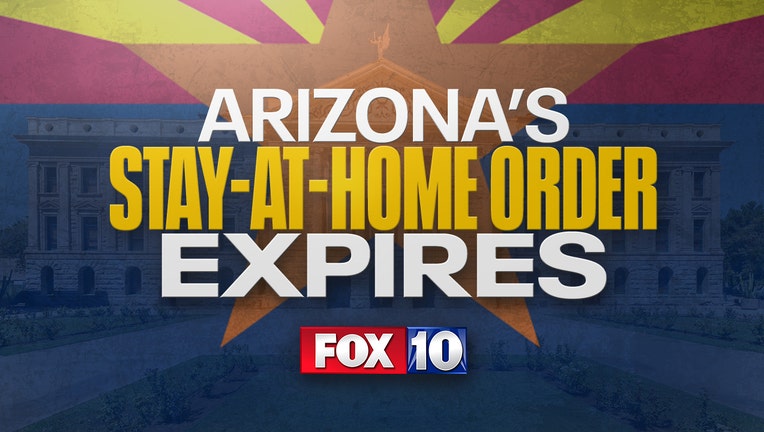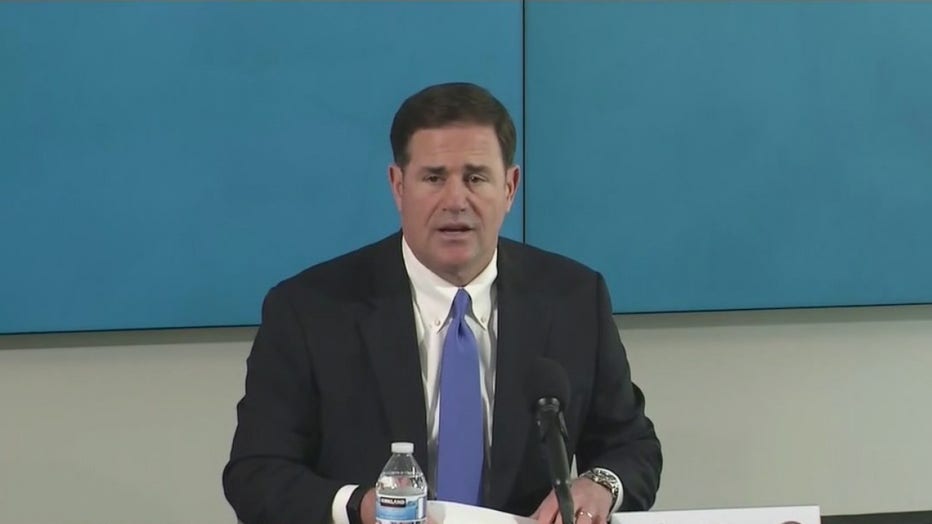Arizona's stay-at-home order expires

PHOENIX - After over a month, Arizona's stay-at-home order has officially expired at midnight.
Since 5:00 p.m. on March 31, Arizona was under a stay-at-home order that was put in place amid the coronavirus pandemic. The order was subsequently extended to May 15.
The stay-at-home order, officially called the "Stay home, Stay healthy, Stay Connected" Order, requires a number of businesses deemed non-essential to close while the order was in effect.
Businesses deemed to be essential, based on an earlier list drawn up by Gov. Doug Ducey, were allowed to remain open. They included grocery stores, media outlets, banks, certain hardware stores, post offices, and other kinds of businesses.
For Arizona, a gradual reopening
Prior to the stay-at-home order's expiration, many facilities across Arizona were already allowed to reopen.
Hair salons, nail salons, and barbershops were allowed to reopen to customers on May 8. On the same day, non-essential retailers were allowed to sell items to customers in-store.
In the days prior to May 8, non-essential retailers were allowed to resume operations, but only via delivery service and other means that do not entail in-store sales.
On May 11, restaurants were allowed to reopen dining rooms to patrons, with modifications that followed social distancing guidelines. Gyms and pools were able to reopen on May 13.
Some Arizona casinos, including the Ak-Chin and Fort McDowell Casinos, reopened partially Friday morning, while some malls in the Phoenix metropolitan area have plans to reopen Saturday with reduced capacity and new restrictions.
The Grand Canyon partially reopened the South Rim, while Salt River Tubing is starting up on Saturday with new safety measures.
New health order replaces stay-at-home order

Gov. Ducey: Arizona’s stay-at-home order to expire May 15
The order was extended once during the ongoing COVID-19 pandemic. FOX 10's Bailey Miller reports.
According to an executive order issued by Gov. Ducey, a new order, officially called the "Stay Healthy, Return Smarter, Return Stronger" policy, will replace the stay-at-home order.
The "Stay Healthy, Return Smarter, Return Stronger" policy, which took effect at midnight on May 16, asks vulnerable individuals, including those with underlying health conditions and those of the elderly population, to limit their time away from home.
The new order also asks businesses to continue to encourage telework, ask its workers to return in phases, minimize non-essential travel, and strongly consider special accommodations for those who are members of the vulnerable population.
According to Gov. Ducey, schools will remain closed, and in-person visits to nursing homes will remain banned.
"This is not a green light to speed. This is a green light to proceed, and we're going to proceed with caution," Gov. Ducey said, during a news conference held in the days prior to the stay-at-home order's expiration.
RELATED: How one downtown Phoenix restaurant is handling its reopening amid pandemic

Arizona Gov. Doug Ducey
RELATED: LIVE Blog: Coronavirus in Arizona - Latest case numbers
In order to protect yourself from a possible infection, the CDC recommends:
- Avoid close contact with people who are sick.
- Avoid touching your eyes, nose, and mouth.
- Stay home when you are sick.
- Cover your cough or sneeze with a tissue, then throw the tissue in the trash.
- Clean and disinfect frequently touched objects and surfaces using a regular household cleaning spray or wipe.
- Wash your hands often with soap and water for at least 20 seconds, especially after going to the bathroom; before eating; and after blowing your nose, coughing, or sneezing.
MAP: Worldwide interactive Coronavirus case data
MAP: Arizona Coronavirus cases by zip code
FULL COVERAGE: fox10phoenix.com/coronavirus

Why social distancing can save lives amid COVID-19 pandemic
Social distancing is not only about preventing the illness itself, but rather, slowing the rate at which people get sick.
Coronavirus (COVID-19)
How it spreads, symptoms, prevention, treatment, FAQ
https://www.cdc.gov/coronavirus
Arizona COVID-19 Response
Public resources, FAQ, webinars
https://www.azdhs.gov/coronavirus
On CoronavirusNOW.com, you'll find extensive coverage about COVID-19, including breaking news from around the country, exclusive interviews with health officials, and informative content from a variety of public health resources.
RELATED:

